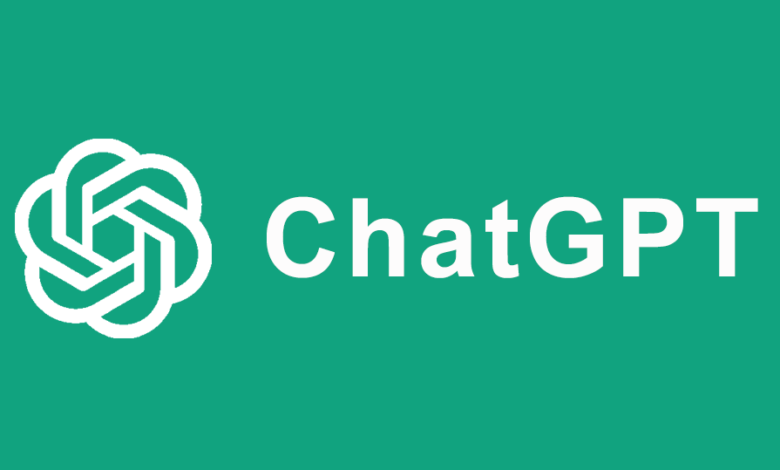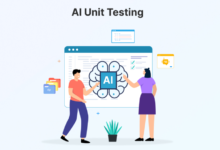Test Smarter, Not Harder: Leveraging ChatGPT and TestGPT for Next-Gen QA Strategies

A strong QA strategy sets clear steps for how testing connects with development goals and keeps software quality consistent. It guides teams on how to write, maintain, and optimize test cases while reducing risks and confusion during testing. Many teams are now moving toward smarter methods that adapt faster and use data for better decisions.
With GenAI testing tools such as ChatGPT and TestGPT, QA teams can create and manage tests with more accuracy and less manual work. These tools handle repetitive tasks, give better test coverage, and make it easier to understand testing results. Instead of doing everything manually, testers can use AI to work faster and make smarter choices.
Overview of AI in Software Testing
AI software testing combines artificial intelligence and machine learning algorithms within the testing process. Unlike traditional testing methods that depend on manual work and fixed scripts, AI testing introduces intelligent automation that refines several stages of the testing cycle.
Machine learning models in AI testing study extensive test data, create optimized test cases, and detect patterns that might signal possible defects. The tools update themselves as software changes occur, ensuring continuous testing while limiting manual effort. This capability is especially helpful in agile and DevOps practices, where quick releases and constant integration take place.
Why Testing Needs a Smarter Approach?
Here’s why a smarter approach to testing has become essential:
- Frequent Releases: Modern development pushes updates more frequently, but conventional testing methods fall behind, allowing untested features into production. GenAI testing adjusts test cases in real time to support continuous delivery.
- Constant Maintenance of Test Scripts: Automated tests lose value when scripts break after every change. Testers spend more time fixing scripts than improving coverage or testing new features.
- Inconsistent Test Coverage: Human judgment plays a major role in manual test planning. When data-driven insights are missing, vital user paths can be skipped or left untested.
- Repetitive Tasks: Writing and maintaining regression test cases can feel mechanical. AI-based tools can take over repetitive work, leaving testers free to focus on exploratory and creative testing.
- Complex Application Architectures: With microservices, APIs, and distributed systems, testing needs context-aware intelligence that can adapt to changes across multiple layers of the product.
- Need for Data-Driven Decision Making: Modern QA teams need insights, not just results. Smarter testing brings predictive analytics and natural language understanding to interpret logs, feedback, and outcomes effectively.
See also: Choosing the Right Lens Technology for Your Lifestyle and Eye Health
What ChatGPT and TestGPT Can Do for QA?
GenAI testing with ChatGPT and TestGPT introduces a new approach to quality assurance. Rather than relying on fixed scripts, testers can use natural language to plan, build, and manage tests that adapt as the product changes. ChatGPT works as a conversational testing assistant, while TestGPT functions as a specialized engine for test creation and execution.
Here’s how ChatGPT and TestGPT transform QA workflows:
- Generate Test Cases From Plain Text Requirements: ChatGPT and TestGPT can interpret user stories, acceptance criteria, or project documents and convert them into well-structured, executable test cases. This helps save time in the early stages of test planning.
- Adapt Tests to Application Changes: When code or UI elements are updated, both tools detect changes and modify affected test scripts automatically. This reduces script maintenance and keeps automation suites consistent with current builds.
- Analyze and Summarize Test Results: Instead of manually reviewing test logs, these AI tools summarize execution outcomes, point out recurring failure patterns, and provide insights into areas that require immediate attention.
- Generate Test Data and Mock Responses: They can produce valid and invalid data sets, mock API responses, or boundary values based on the defined test cases. This ensures coverage of multiple input scenarios during validation.
- Support Exploratory and Regression Testing: ChatGPT can recommend areas for exploratory testing based on recent code commits or production incidents. TestGPT can then automatically add those cases to the regression suite for continuous validation.
- Identify Risk-Prone Areas: By detecting patterns, these tools identify modules or features that frequently experience failures, helping testers decide where to focus their testing first.
How to Integrate ChatGPT and TestGPT to QA Workflows
Below are clear steps that guide the effective integration of AI into QA activities.
- Identify Where AI Fits Best: The first step in GenAI testing is identifying areas where AI can add real value. These tools can complement requirement analysis, test design, automation scripting, and defect documentation. Once those areas are mapped, the QA team can decide where automation through AI is beneficial and where human review remains essential.
- Planning and Requirement Mapping: QA teams can start by feeding requirement documents or acceptance criteria into ChatGPT to extract potential risk areas or ambiguous statements. This sets a strong foundation before any test design begins. TestGPT can then translate those insights into structured test objectives and categorize them by priority or type.
- Integration with Automation Pipelines: ChatGPT and TestGPT can work seamlessly with continuous testing setups. Generated test cases can connect with automation frameworks, and ChatGPT can summarize test pipeline outcomes and point out unusual results, creating a stronger link between development and testing.
- Cross-Team Collaboration: GenAI testing tools support clear communication between QA and development teams. TestGPT creates test documentation with standard wording, while ChatGPT rewrites defect reports in easy-to-read language for developers.
- Adapting to AI Feedback: ChatGPT and TestGPT respond to prompts and feedback instead of following fixed rules like traditional tools. Teams can keep organized versions of prompt templates for tasks such as smoke testing or regression reporting. As these prompts get refined, the AI output becomes more accurate and more relevant to the testing needs.
- Governance and Oversight: Introducing GenAI testing tools to QA also requires setting up review checkpoints. Human testers need to verify the generated results before they move into automation or production pipelines. Keeping records of these review steps helps maintain traceability and keeps the testing process accurate.
Limitations of Using ChatGPT for Software Testing and Test Automation
Let’s look at some common challenges that come with using ChatGPT for software testing.
- Limited Context Awareness: ChatGPT doesn’t truly understand the intent or purpose of the software under test. Its responses depend on statistical patterns rather than logical reasoning. Because of this, it can create test cases or responses that seem right but miss the true context. When a question depends on details that are not clearly stated, ChatGPT can misunderstand the need or give incomplete test logic.
- Limited Generation of Test Cases: ChatGPT can create test cases when provided with detailed inputs, but the results are not always complete or relevant. It often misses edge cases and boundary scenarios that matter most in real projects. Since it depends entirely on user prompts, any lack of detail or context can lead to incomplete test coverage.
- Inability to Understand Code: Testing software usually means checking the source code to look for errors, dependencies, and logic issues. ChatGPT does not fully understand how the code works. It can follow code patterns but cannot understand detailed logic or catch real coding problems. Due to this, it is less useful in testing or debugging actual code.
- Lack of Execution Capability: ChatGPT cannot run or validate test cases on real systems. It can only suggest how tests should be executed. The actual implementation, execution, and result evaluation still depend on human testers or integrated automation tools. This limitation keeps ChatGPT from being a complete automation solution.
- No Contextual Understanding: Another challenge lies in context. ChatGPT does not inherently grasp the business logic, user intent, or purpose of the software under test. As a result, its responses can sometimes be generic or mismatched with real application needs.
Next-Gen QA Strategies for Using ChatGPT and TestGPT
GenAI testing tools like ChatGPT and TestGPT can make testing faster and smarter, but only when used with the right strategy. These tools work best when testers use them thoughtfully rather than relying on them blindly.
The following practices can help QA teams get meaningful results and maintain testing accuracy.
- Start with Clear and Detailed Prompts: AI tools respond based on how well the input is written. Provide structured and descriptive prompts that specify the testing goal, framework, and data format. For example, instead of saying “Write test cases for login,” write “Generate five negative and positive login test cases for a web app using Selenium.” Clear instructions lead to precise and useful responses.
- Review and Refine AI Output: Never copy generated test cases or scripts directly into production. Review, modify, and verify them against real-world conditions. ChatGPT and TestGPT can miss important dependencies or generate incomplete scenarios. Human validation keeps quality intact and avoids logical or framework errors.
- Maintain Human Oversight and Context Awareness: AI cannot fully grasp user intent or application logic. Testers must always apply contextual understanding, especially when validating critical workflows such as payments or authentication. Human insight ensures that the generated cases align with business goals and security standards.
- Combine AI with Existing Automation Frameworks: Integrate ChatGPT or TestGPT outputs into automation frameworks like Selenium, Cypress, or Playwright. Let the AI generate test data, input parameters, or script templates, while the frameworks handle execution and validation. This combination strengthens overall AI software test automation workflows and improves consistency across test environments.
You can make this process smoother by using a cloud testing platform like LambdaTest. KaneAI is a GenAI-native testing agent that allows teams to plan, author, and evolve tests using natural language. It is built from the ground up for high-speed quality engineering teams and integrates seamlessly with the rest of LambdaTest’s offerings around test planning, execution, orchestration, and analysis.
- Keep Data Privacy in Mind: Avoid sharing sensitive data, credentials, or proprietary code while using AI tools. Train internal models on anonymized data or use private API integrations to safeguard information.
- Use AI for Brainstorming and Coverage Expansion: Treat these tools as creative partners. Ask them to suggest alternate paths, rare scenarios, or regression ideas that testers might overlook.
Conclusion
Adopting GenAI testing is essential for building stronger QA practices that match modern development speed. It provides teams with a clear way to create, check, and improve test coverage while keeping human thinking at the heart of decisions. This balanced approach helps testing stay connected to real business goals and lowers the chance of missing untested parts in production.
LambdaTest uses Generative AI-driven testing to bring smarter automation, faster feedback, and better collaboration across QA and development teams. By combining tester expertise with GenAI insights, teams can achieve dependable releases and maintain a consistent culture of quality throughout the software lifecycle.







